I have a partial discharge wave form which varies between -100mV to +100mV. For simplification, I am using a sinusoidal wave with that range. I need to amplify and bias this signal between the range of 0-3.3V since this signal will be an input to the arduino. I have looked into instrumentation amplifiers and tried to simulate this on multisim but I am not getting the desired result. Can someone help me with this design? Thank you.
EDIT:
This is the complete circuit that I tried to draw (I got this circuit off the internet from my research - i do not have the link). I am trying to bias the input ( input is 100mV peak sine wave centered at 0. I want bias to be 1.65V). This is not the instrumentation amplifier since this is the first circuit I tried to model without the use of an in-amp.
So basically, the circuit involves and input sine signal, a bias, buffer and an non inverting amplifier (the last op-amp at the bottom)
Second image is the subcircuit Op-Amp 1. Third image is the buffer. From what I know you would need a buffer to match the input and output impedance The last image is the oscilloscope.The green waveform represents the input signal. The red is the output from the buffer. It is biased around 1.65 volts. But when I add the non-inverting op amp, I get a straight line on the oscilloscope (represented white on the oscilloscope)
Also, all the op amps are single rail.
